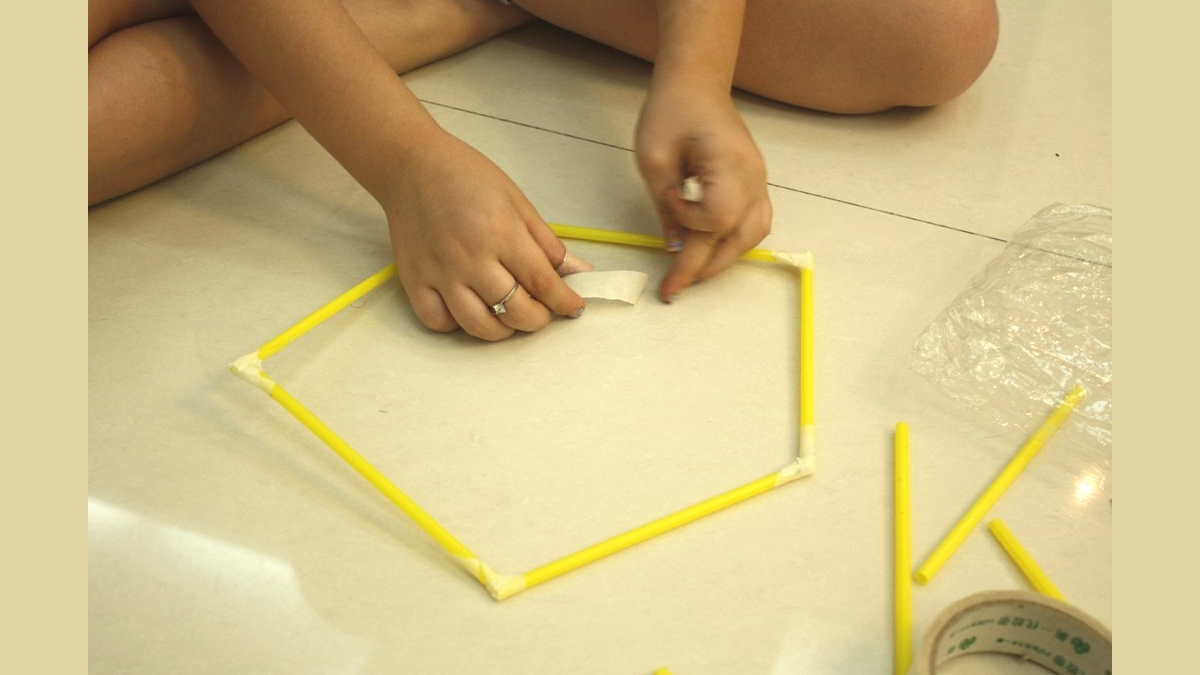Unleash your inner engineer with our captivating Straw Structures Activity! Dive into a hands-on experience that combines education and excitement as you construct imaginative structures using simple straws. This engaging activity not only fosters creativity but also introduces basic engineering principles in a playful way. Join us on a journey of discovery, where learning meets fun in the world of straw structures!
The Straw Structures activity is a fun and engaging STEM challenge that encourages participants to design and construct stable structures using only drinking straws and tape. This activity promotes teamwork, problem-solving, and creativity, while also introducing basic engineering concepts. Here’s a step-by-step guide for conducting the Straw Structures activity:
Materials Needed:
- Plastic drinking straws (regular or flexible)
- Masking tape or adhesive putty
- Ruler or measuring tape
- Small weights (for example, coins or small objects)
- Optional: Scissors (for cutting straws if needed)
Instructions:
- Introduction: Start by explaining the purpose of the activity and its connection to engineering and problem-solving. Emphasize the importance of working as a team and using creativity to build the most stable structure.
- Divide into Teams: Divide the participants into small groups (2-4 participants per group). Each group will work together to build their straw structure.
- Design Guidelines: Set specific guidelines for the straw structures, such as a minimum height or span the structure must achieve. For example, you could ask the groups to build a bridge that spans a certain distance or a tower that reaches a certain height.
- Distribute Materials: Provide each group with straws and tape or putty. You can also provide scissors if needed, but encourage them to use the straws without cutting them if possible.
- Building Time: Give the groups a set amount of time (for example, 20-30 minutes) to plan, design, and construct their straw structures based on the given guidelines.
- Testing Phase: After the building time is up, it’s time to test the structures. Each group should place their structure on a flat surface and add small weights one at a time to see how much weight the structure can support.
- Observations and Reflection: As each group tests their structure, encourage them to observe how the structure behaves and discuss its strengths and weaknesses. What could be improved in their design? How does the structure respond to the added weight?
- Competition (Optional): If you have multiple groups participating, you can turn it into a friendly competition to see whose structure can support the most weight before collapsing.
- Debriefing: Gather all the participants together for a debriefing session. Discuss the different designs and approaches used by each group. Ask the following questions:
-
- What challenges did you face during the activity?
- What strategies did you use to make your structure stable?
- How did your group work together as a team?
- What could you do differently to improve your structure?
10. Cleanup: Ensure that all the straws and other materials are properly cleaned up and disposed of after the activity.
This activity can be adjusted based on the age and skill level of the participants. For younger children, you may provide more guidance and simplify the objectives, while older participants can be given more complex challenges to tackle. Have fun and encourage participants to get creative with their designs!
| STEM Concept | Explanation and Application |
| Science Concepts | |
| Forces and Loads | Understanding how forces act on the straw structures, such as compression and tension, affecting their stability. |
| Materials Science | Observing the properties of the straws and their interaction with tape to create a stable structure. |
| Technology Concepts | |
| Construction | Using the straws and tape as construction materials to build the straw structures. |
| Stability Testing | Using small weights to test the stability and load-bearing capacity of the straw structures. |
| Engineering Concepts | |
| Design and Planning | Planning and designing the structure to meet specific guidelines and objectives, such as height or span. |
| Structural Integrity | Considering how to distribute forces and ensure the structural integrity of the straw constructions. |
| Mathematics Concepts | |
| Measurement | Measuring the length of straws and dimensions of the structures for accuracy and precision. |
| Geometry | Understanding the angles and shapes used in the design and construction of the straw structures. |
| Problem-solving | Applying mathematical reasoning to address challenges and optimize the stability of the structures. |
Straw Structures activity. Each concept can be further explored and expanded based on the level of understanding and age group of the participants. Additionally, this activity can be a starting point for exploring more complex STEM topics related to structural engineering, materials science, and mathematical modeling.

